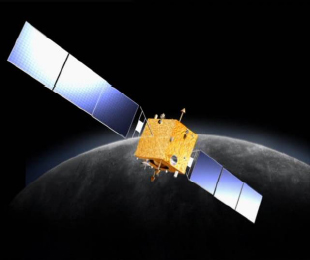Reports: China to Launch Second Moon Probe in 2009

China is planningto launch a second spacecraft to explore the moon even as its first lunarorbiter continues to map the lunar surface, the country?s state-run mediahas reported.
The newprobe, Chang?e 2, is slated to launch sometime in 2009, according to reports bythe Xinhua News Agency and China Central Television. Ye Peijian,lead designer and commander of China?s Chang?e 1 lunar orbiter currently circlingthe moon, announced plans for the second mission, but provided little additionaldetails, Xinhua reported.
Chang?e 1 isa 5,180-pound(2,350-kg) satellite that launched Oct. 24 from China?s Xichang SatelliteLaunch Center in the southwest Sichuan Province to spend about one year mappingand studying the moon. The spacecraft is based on China?s Dongfanghong 3telecommunication satellite platform and equipped with eight primary instruments,though Ye did not state whether its Chang?e 2 successor would be based on asimilar design.
But the successof Chang?e 1 to date, especially its survival of a Feb. 20 eclipse thatstarved its power-generating solar panels of sunlight, have been underdiscussion, according to a series of reports by Xinhua and otheroutlets.
?Chang?e 1passed the test,? Xinhua quoted Ye as saying after last month?s totallunar eclipse. The eclipse forced the lunar orbiter to consume about 40 percentof its overall battery power, less than the 60 percent expected before theeclipse, and left it out of contact with flight controllers in Beijing for about49 minutes, Xinhua reported.
The eclipseleft the lunar probe without direct sunlight for about 80 minutes, though itdid fire its rocket engine to tweak its orbital path to minimize the time inshadow, Gu Shen, deputy director of Chang?e 1?s measurement and control systems,told Xinhua.
On. Feb.21,Chang?e 1 beamed home its complement of 30 songs as part of China?s LanternFestival celebration to mark the end of the country?s Lunar New Yearfestivities, Xinhua reported.
Get the Space.com Newsletter
Breaking space news, the latest updates on rocket launches, skywatching events and more!
China?sChang?e 1 spaceflight is part of a three-stage plan toexplore the moon with orbiting spacecraft, rovers and ultimately a samplereturn mission.
The ChinaNational Space Administration is also preparing to launch the nation?s thirdmanned mission, Shenzhou 7, later this year. China is only the third countryafter Russia and the U.S. to launch astronauts into orbit. The country?s firstastronaut Yang Liwei launched into orbit in 2003 during the Shenzhou 5 mission,with a two-astronaut crew following aboard Shenzhou 6 in 2005.
Shenzhou 7is expected to launch three astronauts into space and feature China?s firstspacewalk. Hardware tests of the mission?s airlock and spacesuits have met with success, according to past Xinhuareports.
- NEW GALLERY: Lunar Eclipse Wows the World
- VIDEO: Moon 2.0: Join the Revolution
- Shenzhou Rising: China's Second Manned Spaceflight
Join our Space Forums to keep talking space on the latest missions, night sky and more! And if you have a news tip, correction or comment, let us know at: community@space.com.

Tariq is the Editor-in-Chief of Space.com and joined the team in 2001, first as an intern and staff writer, and later as an editor. He covers human spaceflight, exploration and space science, as well as skywatching and entertainment. He became Space.com's Managing Editor in 2009 and Editor-in-Chief in 2019. Before joining Space.com, Tariq was a staff reporter for The Los Angeles Times covering education and city beats in La Habra, Fullerton and Huntington Beach. In October 2022, Tariq received the Harry Kolcum Award for excellence in space reporting from the National Space Club Florida Committee. He is also an Eagle Scout (yes, he has the Space Exploration merit badge) and went to Space Camp four times as a kid and a fifth time as an adult. He has journalism degrees from the University of Southern California and New York University. You can find Tariq at Space.com and as the co-host to the This Week In Space podcast with space historian Rod Pyle on the TWiT network. To see his latest project, you can follow Tariq on Twitter @tariqjmalik.